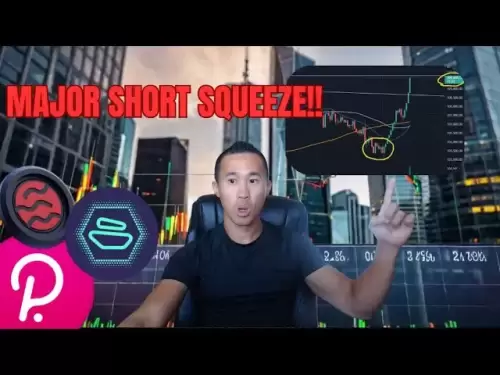-
 Bitcoin
Bitcoin $108,270.9768
2.07% -
 Ethereum
Ethereum $2,489.8066
2.50% -
 Tether USDt
Tether USDt $1.0004
0.01% -
 XRP
XRP $2.2035
0.66% -
 BNB
BNB $661.6608
2.32% -
 Solana
Solana $150.6425
2.13% -
 USDC
USDC $0.9999
-0.01% -
 TRON
TRON $0.2810
0.90% -
 Dogecoin
Dogecoin $0.1645
3.05% -
 Cardano
Cardano $0.5743
4.91% -
 Hyperliquid
Hyperliquid $38.8419
-0.15% -
 Bitcoin Cash
Bitcoin Cash $504.3134
-2.64% -
 Sui
Sui $2.8096
4.35% -
 Chainlink
Chainlink $13.3095
2.21% -
 UNUS SED LEO
UNUS SED LEO $8.9469
0.33% -
 Avalanche
Avalanche $17.9231
3.93% -
 Stellar
Stellar $0.2340
0.74% -
 Toncoin
Toncoin $2.8458
3.21% -
 Shiba Inu
Shiba Inu $0.0...01158
3.47% -
 Litecoin
Litecoin $86.0738
1.94% -
 Hedera
Hedera $0.1507
2.99% -
 Monero
Monero $319.8544
2.31% -
 Polkadot
Polkadot $3.4081
1.95% -
 Dai
Dai $1.0000
0.01% -
 Bitget Token
Bitget Token $4.5645
0.91% -
 Ethena USDe
Ethena USDe $1.0002
0.00% -
 Uniswap
Uniswap $7.2959
5.27% -
 Aave
Aave $272.4623
2.90% -
 Pepe
Pepe $0.0...09680
2.96% -
 Pi
Pi $0.4955
0.78%
How to stake Solana (SOL) on Coinbase?
Stake SOL on Coinbase to earn rewards by securing the Solana network, with easy setup and automatic validator selection.
Jul 02, 2025 at 04:42 pm
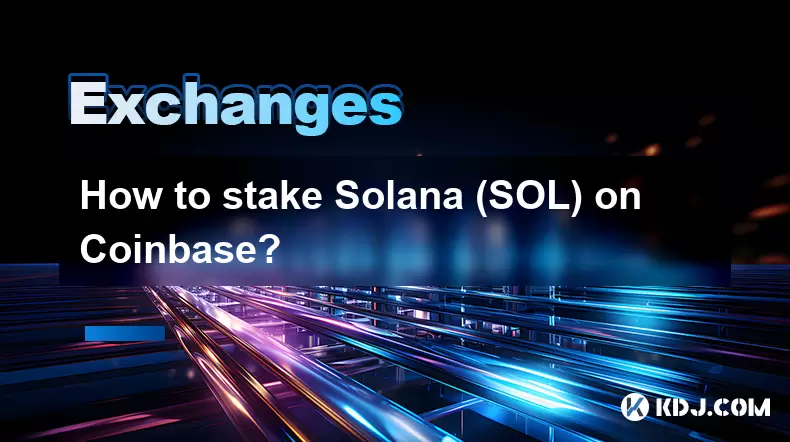
What Is Staking and Why Stake Solana (SOL)?
Staking refers to the process of locking up cryptocurrency assets to support the operations of a blockchain network. In return, stakers receive rewards in the form of additional tokens. Solana (SOL) is one of the most popular cryptocurrencies for staking due to its high throughput and scalability. By staking SOL, users help secure the network through validator nodes and are compensated with newly minted SOL tokens.
Staking on Coinbase offers a user-friendly experience, especially for those who prefer not to manage their own validator or delegate directly via the command line. Coinbase handles much of the technical complexity, making it accessible even for beginners.
Prerequisites for Staking SOL on Coinbase
Before initiating the staking process, there are several prerequisites you need to fulfill:
- You must have a verified Coinbase account.
- Ensure that your account supports staking capabilities, which may require completing advanced verification steps.
- Your wallet must contain a minimum amount of SOL to begin earning rewards — though Coinbase does not enforce a strict minimum, having at least 0.1 SOL is generally recommended to cover fees and initiate delegation.
- You should enable two-factor authentication (2FA) for enhanced security.
Coinbase automatically selects validators for you based on performance and reliability, so you don't need to manually choose a validator node.
Step-by-Step Guide to Stake SOL on Coinbase
- Log into your Coinbase account: Use your credentials to access your Coinbase dashboard.
- Navigate to the "Rewards" section: From the left-hand menu or main dashboard, locate the "Rewards" tab where staking options appear.
- Select Solana (SOL) from the list: You will see available staking opportunities; click on SOL to view details such as current reward rates and lock-up periods.
- Click the "Stake" button: This opens a dialog box where you can specify the amount of SOL you wish to stake.
- Enter the amount of SOL to stake: Make sure you're aware of any transaction fees or minimum requirements.
- Confirm the transaction: Review all details before confirming. Once confirmed, your SOL will be delegated to a validator pool managed by Coinbase.
It’s important to note that once you stake your SOL, there may be an unbonding period if you decide to unstake, during which your funds won’t earn rewards and cannot be withdrawn immediately.
Understanding Staking Rewards and Performance Metrics
After successfully staking SOL, rewards are typically distributed periodically, often daily or weekly. These rewards depend on various factors including:
- The total amount of SOL staked across the network.
- The performance and uptime of the validator(s) your SOL is delegated to.
- Network inflation rates and protocol adjustments.
On Coinbase, you can track your staking rewards in real time under the "Rewards" section. Coinbase displays both accrued and estimated future earnings based on current conditions. It also provides transparency regarding validator performance, slashing risks, and historical yields.
One key metric to monitor is the annual percentage yield (APY), which gives an estimate of how much you’ll earn over a year. APY fluctuates depending on network participation and inflation control mechanisms.
Potential Risks and Considerations When Staking SOL on Coinbase
While staking on Coinbase is relatively safe, there are still some risks and considerations:
- Validator slashing: Although rare, if a validator behaves maliciously or fails to maintain uptime, a portion of staked funds could be slashed. Coinbase mitigates this risk by selecting reliable validators.
- Unbonding period: As previously mentioned, unstaking may involve a waiting period, typically ranging from 2 to 7 days.
- Market volatility: While your SOL is staked, its value can fluctuate due to market conditions. Always consider the trade-off between holding versus staking.
- Platform dependency: Since Coinbase manages the delegation process, you’re reliant on their infrastructure and decisions regarding validator selection.
Always ensure that you understand these aspects before committing your funds.
Frequently Asked Questions
Q: Can I stake SOL on Coinbase if I use Coinbase Wallet instead of the main platform?
A: Currently, staking features for SOL are only available on the main Coinbase exchange platform. Coinbase Wallet does not support direct staking but allows you to transfer SOL to your exchange wallet for staking purposes.
Q: Are staking rewards from SOL taxable?
A: Yes, in many jurisdictions, including the United States, staking rewards are considered taxable income. You should report them according to local tax laws and consult a tax professional if needed.
Q: Can I move my staked SOL to another wallet while it's staked?
A: No, once SOL is staked, it becomes temporarily illiquid. You must first unstake it and wait for the unbonding period to complete before transferring or trading.
Q: Does Coinbase charge any fees for staking SOL?
A: Coinbase typically deducts a small fee from the staking rewards earned rather than charging a direct fee. This fee covers operational costs and is reflected in the displayed APY.
Disclaimer:info@kdj.com
The information provided is not trading advice. kdj.com does not assume any responsibility for any investments made based on the information provided in this article. Cryptocurrencies are highly volatile and it is highly recommended that you invest with caution after thorough research!
If you believe that the content used on this website infringes your copyright, please contact us immediately (info@kdj.com) and we will delete it promptly.
- XRP Price Targets $2.40 After Descending Channel Breakout: Is $40 Next?
- 2025-07-03 08:50:12
- All Blacks' Loose Forward Conundrum: New Faces and Familiar Battles
- 2025-07-03 08:30:12
- Bitcoin's Wild Ride: Open Interest, Institutional Bets, and Billions on the Line
- 2025-07-03 08:30:12
- Bitcoin, Strategy, & Profit: MSTR's Crypto Playbook and Trump's Digital Diversification
- 2025-07-03 08:50:12
- Bitcoin on the Brink: Active Supply Signals Potential Rally
- 2025-07-03 06:30:12
- Solana, XRP, SEI: Altcoin Titans and the Next Big Thing
- 2025-07-03 06:50:12
Related knowledge
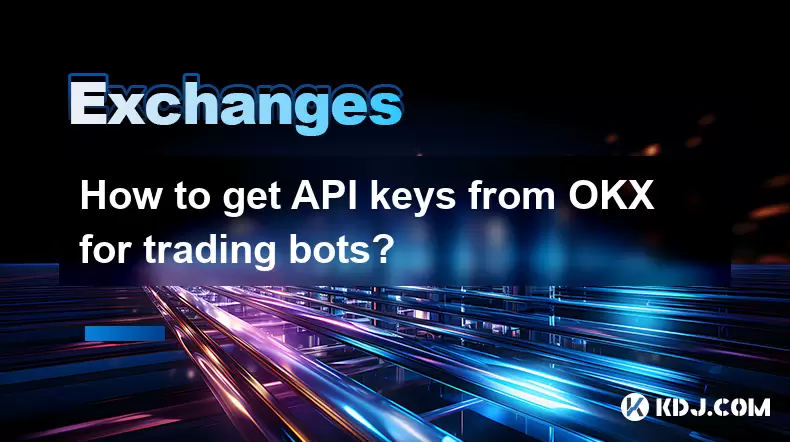
How to get API keys from OKX for trading bots?
Jul 03,2025 at 07:07am
Understanding API Keys on OKXTo interact with the OKX exchange programmatically, especially for building or running trading bots, you need to obtain an API key. An API (Application Programming Interface) key acts as a secure token that allows your bot to communicate with the exchange's servers. On OKX, these keys come with customizable permissions such ...
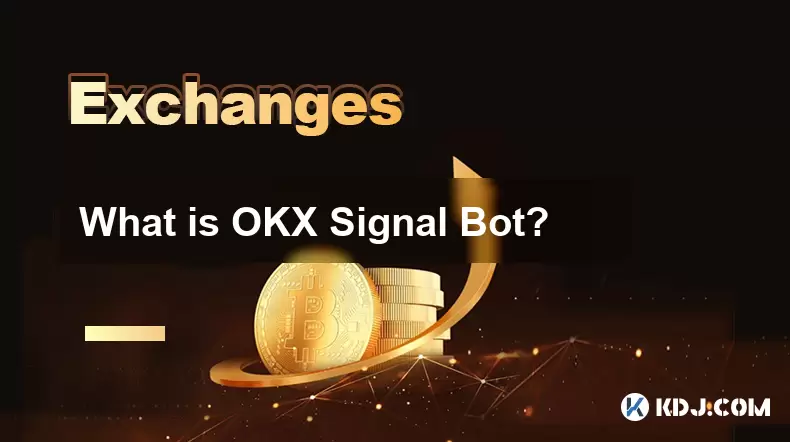
What is OKX Signal Bot?
Jul 02,2025 at 11:01pm
Understanding the Basics of OKX Signal BotThe OKX Signal Bot is a feature within the OKX ecosystem that provides users with automated trading signals and execution capabilities. Designed for both novice and experienced traders, this bot helps identify potential trading opportunities by analyzing market trends, technical indicators, and historical data. ...
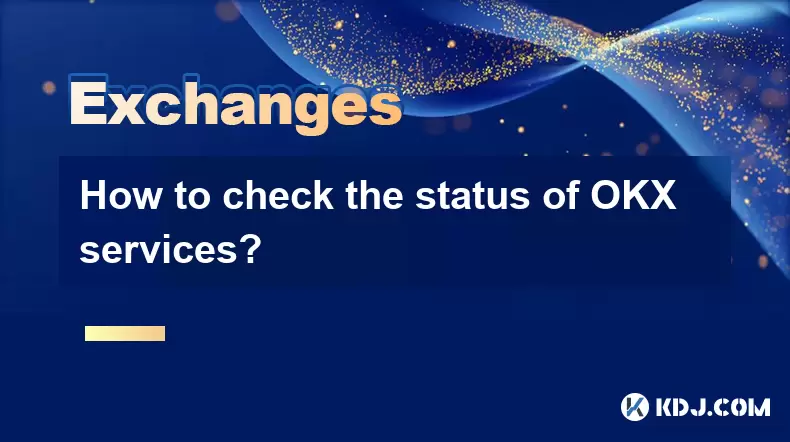
How to check the status of OKX services?
Jul 02,2025 at 11:14pm
What is OKX, and Why Checking Service Status Matters?OKX is one of the world’s leading cryptocurrency exchanges, offering services such as spot trading, futures trading, staking, and more. With millions of users relying on its platform for daily transactions, it's crucial to know how to check the status of OKX services. Downtime or maintenance can affec...
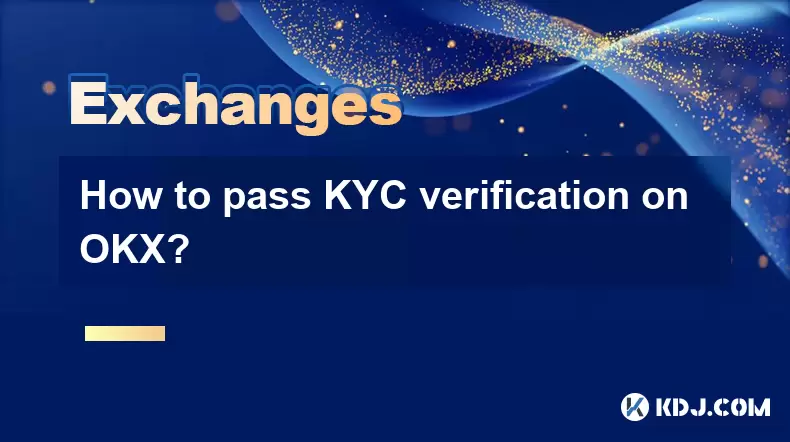
How to pass KYC verification on OKX?
Jul 03,2025 at 01:35am
What Is KYC Verification on OKX?KYC (Know Your Customer) verification is a mandatory process implemented by cryptocurrency exchanges to comply with global financial regulations. On OKX, this procedure ensures that users are who they claim to be, helping prevent fraud, money laundering, and other illicit activities. The KYC process typically involves sub...
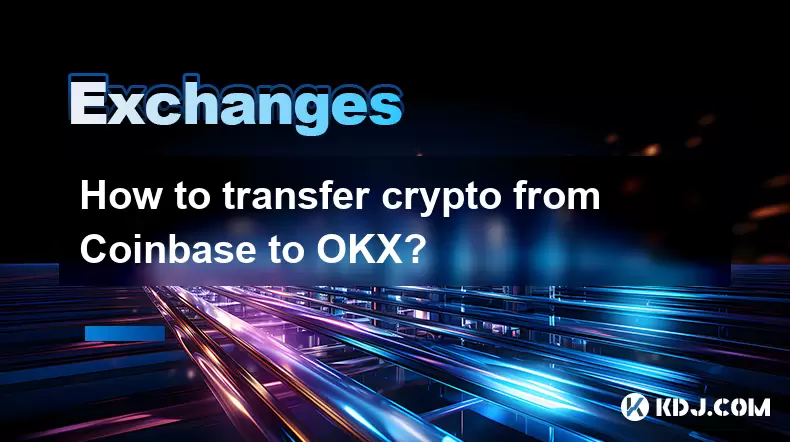
How to transfer crypto from Coinbase to OKX?
Jul 03,2025 at 07:56am
What You Need Before Transferring Crypto from Coinbase to OKXBefore initiating any cryptocurrency transfer, it is crucial to ensure that you have all the necessary preparations in place. Verify your account on both Coinbase and OKX — this includes completing identity verification and setting up two-factor authentication (2FA) for security. Additionally,...
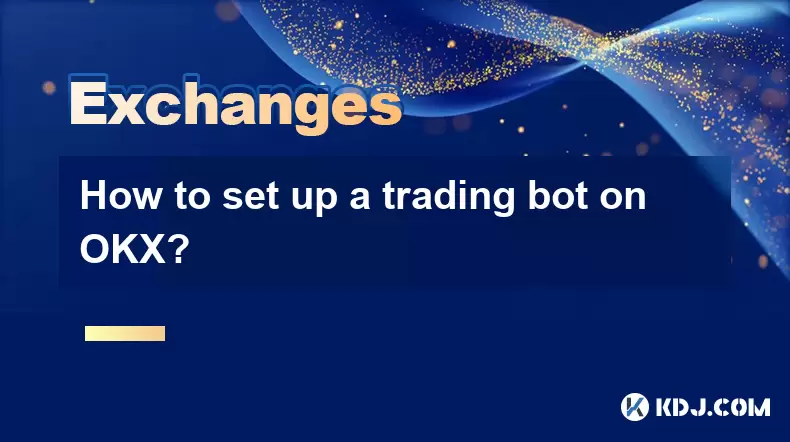
How to set up a trading bot on OKX?
Jul 02,2025 at 09:28pm
Understanding Ethereum Gas Fees: What Are They?Ethereum gas fees are the costs users pay to perform transactions or execute smart contracts on the Ethereum blockchain. These fees are measured in gwei, a denomination of ETH, and are used to compensate miners for the computational resources they expend to validate and process transactions. Every operation...

How to get API keys from OKX for trading bots?
Jul 03,2025 at 07:07am
Understanding API Keys on OKXTo interact with the OKX exchange programmatically, especially for building or running trading bots, you need to obtain an API key. An API (Application Programming Interface) key acts as a secure token that allows your bot to communicate with the exchange's servers. On OKX, these keys come with customizable permissions such ...

What is OKX Signal Bot?
Jul 02,2025 at 11:01pm
Understanding the Basics of OKX Signal BotThe OKX Signal Bot is a feature within the OKX ecosystem that provides users with automated trading signals and execution capabilities. Designed for both novice and experienced traders, this bot helps identify potential trading opportunities by analyzing market trends, technical indicators, and historical data. ...

How to check the status of OKX services?
Jul 02,2025 at 11:14pm
What is OKX, and Why Checking Service Status Matters?OKX is one of the world’s leading cryptocurrency exchanges, offering services such as spot trading, futures trading, staking, and more. With millions of users relying on its platform for daily transactions, it's crucial to know how to check the status of OKX services. Downtime or maintenance can affec...

How to pass KYC verification on OKX?
Jul 03,2025 at 01:35am
What Is KYC Verification on OKX?KYC (Know Your Customer) verification is a mandatory process implemented by cryptocurrency exchanges to comply with global financial regulations. On OKX, this procedure ensures that users are who they claim to be, helping prevent fraud, money laundering, and other illicit activities. The KYC process typically involves sub...

How to transfer crypto from Coinbase to OKX?
Jul 03,2025 at 07:56am
What You Need Before Transferring Crypto from Coinbase to OKXBefore initiating any cryptocurrency transfer, it is crucial to ensure that you have all the necessary preparations in place. Verify your account on both Coinbase and OKX — this includes completing identity verification and setting up two-factor authentication (2FA) for security. Additionally,...

How to set up a trading bot on OKX?
Jul 02,2025 at 09:28pm
Understanding Ethereum Gas Fees: What Are They?Ethereum gas fees are the costs users pay to perform transactions or execute smart contracts on the Ethereum blockchain. These fees are measured in gwei, a denomination of ETH, and are used to compensate miners for the computational resources they expend to validate and process transactions. Every operation...
See all articles





















